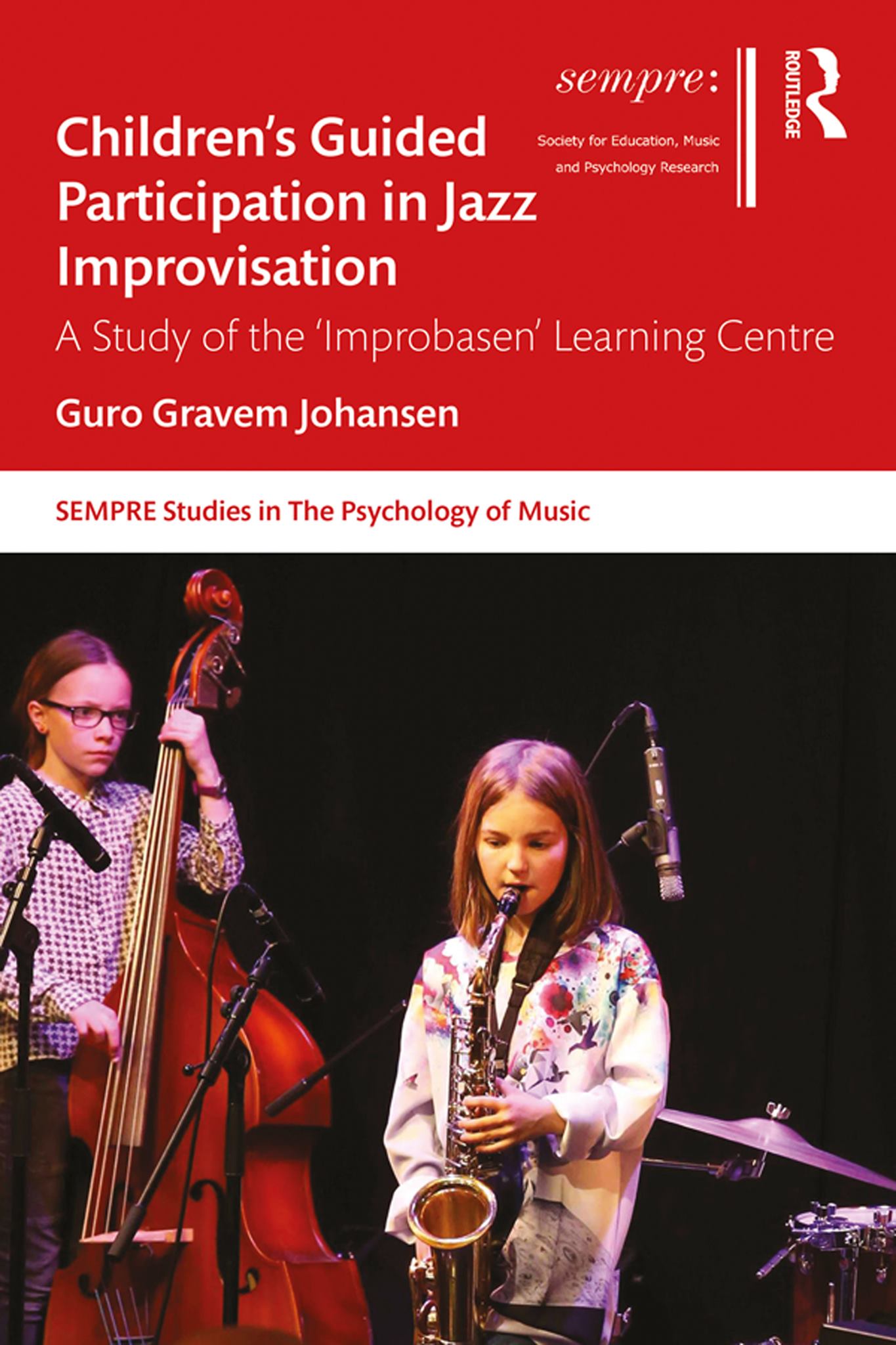Book release

Guro Gravem Johansen's bok "Children’s Guided Participation in Jazz Improvisation" will be released by the reputated publisher Routledge, SEMPRE series on November 30th.
The book springs out of a two-year ethnographic study of the teaching and learning activity at Improbasen, highlighting features from the micro-interactions within the lessons, the organisation of Improbasen, and its international activity.
Music teachers, students, and scholars within music education as well as jazz research will benefit from the perspectives presented in the book, which shows how Improbasen's students systematically acquire tools for improvisation and shared codes for interplay with other children, regardless of geography, age, culture and gender.
Through a process of guided participation in jazz culture, even very young children are empowered to take part in a global, creative musical practice with improvisation as an educational core. The book critically engages in current discussions about jazz pedagogy, inclusion and gender equity, beginning instrumental tuition, creativity, and authenticity in childhood.
Ingrid Monson, Quincy Jones Professor of African-American Music, Department of African American Studies, Harvard University, USA, writes about the book:
'Guro Gravem Johansen’s new book, Children’s Guided Participation in Jazz Improvisation, provides an innovative ethnography of the Improbasen school’s creative approach to teaching jazz improvisation to children and young people between the ages of seven and fifteen.
Johansen carefully documents how Improbasen teaches young children how to improvise as they learn their individual instruments and become musicians capable of performing with others.
There are many noteworthy pedagogical innovations in the Improbasen curriculum including teaching gender and ethnic inclusion, and ethical modes of social interaction.
Johansen’s analysis emphasizes the creation of micro-communities through musical improvisation and the school’s critique of traditional modes of jazz pedagogy.
Especially noteworthy is Johansen’s documentation of Improbasen’s emphasis on gender inclusivity from an early age, which successfully results in the full participation of female students in what is often regarded as a masculine art form.
In demonstrating the capability of the female students, Johansen shows how the study of children’s acquisition of musical skills can have socially transformative results.' Ingrid Monson, Quincy Jones Professor of African-American Music, Department of African American Studies, Harvard University, USA
Ken Prouty, PhD, Associate Professor, Musicology and Jazz Studies, Michigan State University, USA writes:
'Guro Gravem Johansen’s Children’s Guided Participation in Jazz Improvisation stands as an important contribution to jazz and improvised music scholarship, focusing on the experiences of individuals who are not commonly considered in the music’s literature.
Drawing upon the fields of musicology, ethnography, music education, Johansen both builds upon and offers alternatives to existing scholarship in jazz and musical learning that will find a warm and receptive audience.
In the introductory chapter, Johansen makes the case for her study, noting that jazz researchers have tended to ignore “children playing jazz”. But children are, as she points out, among the most active and receptive of musical learners. The jazz community’s lack of direct engagement with children’s experiences in the music calls for a corrective, which Johansen provides in subsequent chapters through a close examination of Improbasen, a Norwegian learning center which focuses on the facilitation of improvisation in children.
Chapter 3, for example, describes the nature of the center, tracing its development, demographic profile, and underlying principles, or the “way” that musical learning at Improbasen is structured and practiced. Central to these principles, Johansen writes, is the desire of Improbasen’s founder to “unite all the world’s children in jazz.”
In a later chapter, Johansen engages more deeply with children’s engagement with a genre that is “constructed as adult’s music”. In examining Improbasen’s programs for teaching jazz to children, Johansen also calls into question the very notion of jazz as “adult music”. The desire to have children play jazz, while still being true to their “authentic” selves as children, serves as a catalyst for a deep, probing discussion of embedded assumptions about jazz, childhood, creativity, and identity.
In closing, I am happy to endorse Johansen’s book, as it is a deeply researched and engagingly written study. I will look forward to seeing it in print, and I am confident that it will stimulate spirited debate among jazz communities, and in the field of musical learning in general."
More reviews and information about the book on the publishers website


